This AP Macroeconomics cheat sheet offers a concise overview of key concepts, such as economic indicators, monetary policy, inflation, and aggregate demand, essential for exam preparation and understanding macroeconomic principles.
Free AP Macroeconomics Practice Test
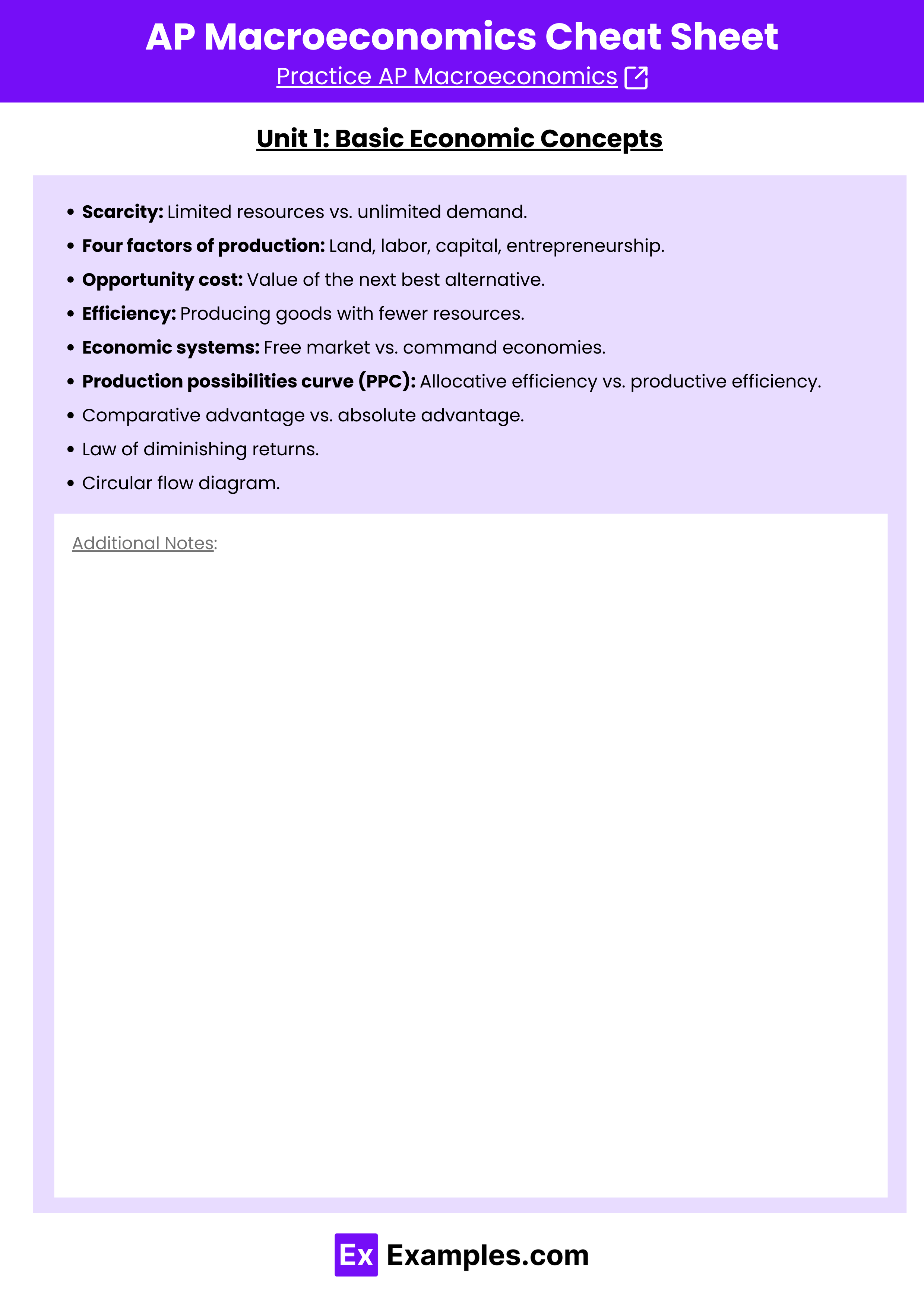
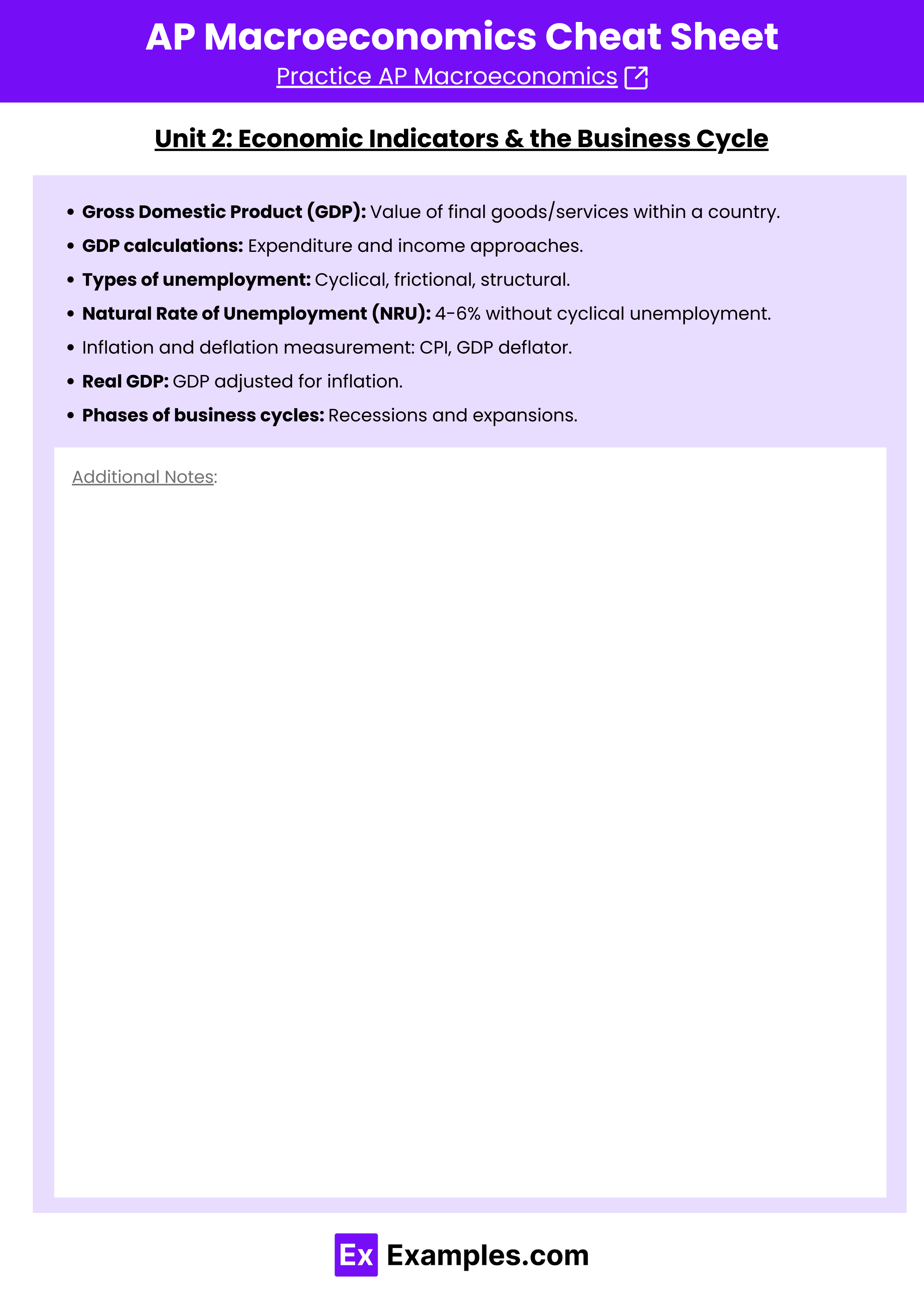
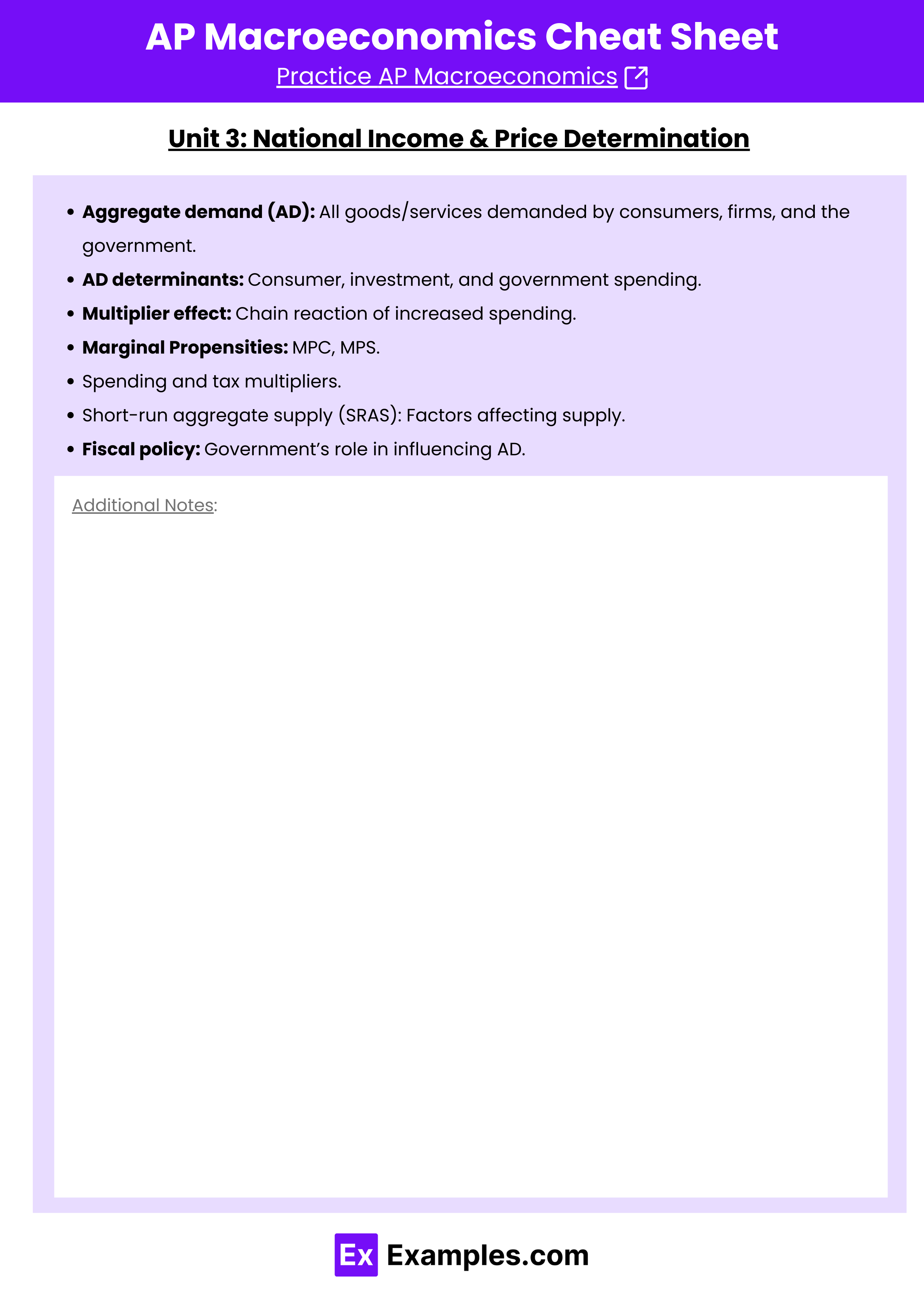
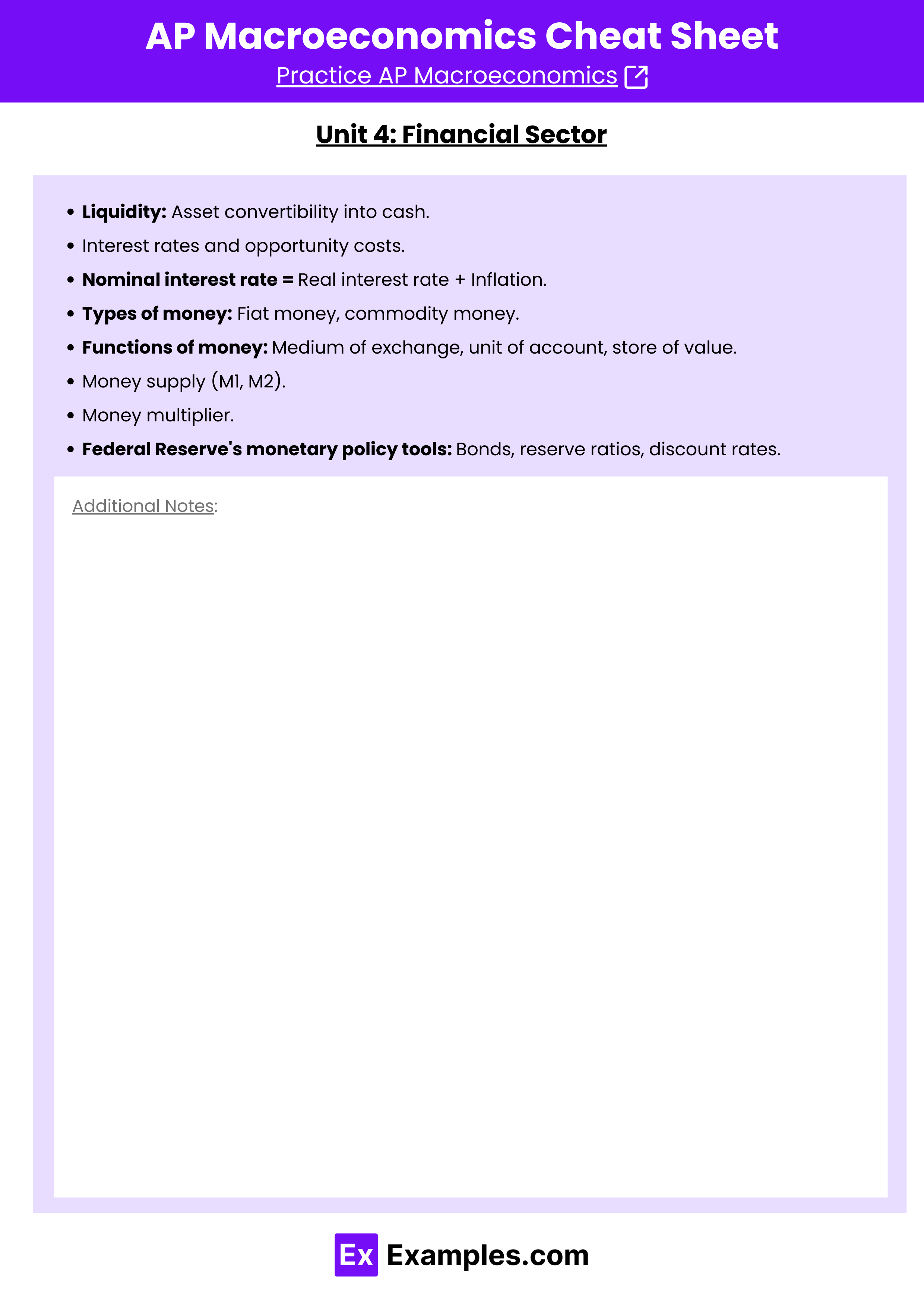
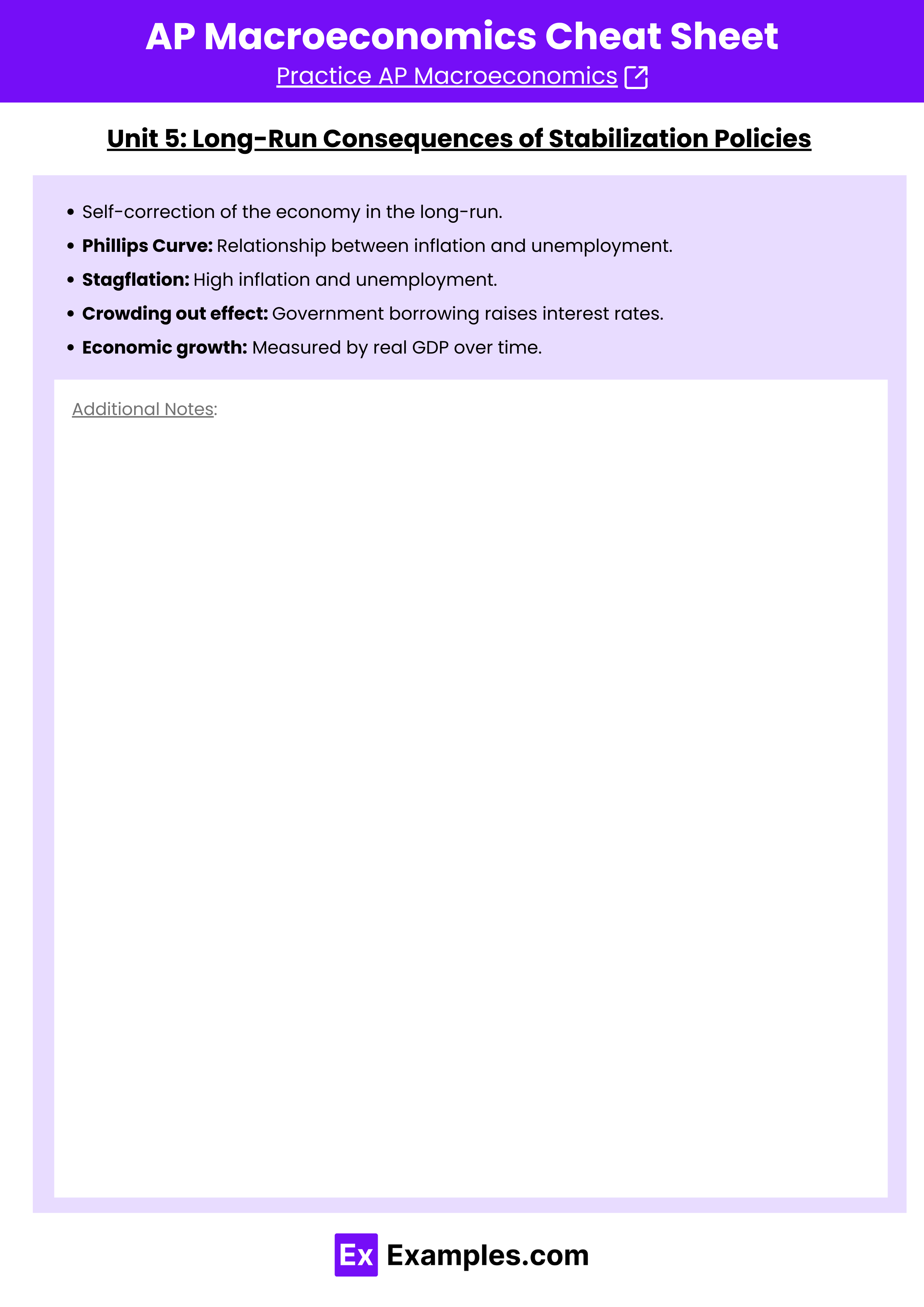

Download AP Macroeconomics Cheat Sheet – pdf
Unit 1: Basic Economic Concepts
- Scarcity: Limited resources vs. unlimited demand.
- Four factors of production: Land, labor, capital, entrepreneurship.
- Opportunity cost: Value of the next best alternative.
- Efficiency: Producing goods with fewer resources.
- Economic systems: Free market vs. command economies.
- Production possibilities curve (PPC): Allocative efficiency vs. productive efficiency.
- Comparative advantage vs. absolute advantage.
- Law of diminishing returns.
- Circular flow diagram.
Unit 2: Economic Indicators & the Business Cycle
- Gross Domestic Product (GDP): Value of final goods/services within a country.
- GDP calculations: Expenditure and income approaches.
- Types of unemployment: Cyclical, frictional, structural.
- Natural Rate of Unemployment (NRU): 4-6% without cyclical unemployment.
- Inflation and deflation measurement: CPI, GDP deflator.
- Real GDP: GDP adjusted for inflation.
- Phases of business cycles: Recessions and expansions.
Unit 3: National Income & Price Determination
- Aggregate demand (AD): All goods/services demanded by consumers, firms, and the government.
- AD determinants: Consumer, investment, and government spending.
- Multiplier effect: Chain reaction of increased spending.
- Marginal Propensities: MPC, MPS.
- Spending and tax multipliers.
- Short-run aggregate supply (SRAS): Factors affecting supply.
- Fiscal policy: Government’s role in influencing AD.
Unit 4: Financial Sector
- Liquidity: Asset convertibility into cash.
- Interest rates and opportunity costs.
- Nominal interest rate = Real interest rate + Inflation.
- Types of money: Fiat money, commodity money.
- Functions of money: Medium of exchange, unit of account, store of value.
- Money supply (M1, M2).
- Money multiplier.
- Federal Reserve’s monetary policy tools: Bonds, reserve ratios, discount rates.
Unit 5: Long-Run Consequences of Stabilization Policies
- Self-correction of the economy in the long-run.
- Phillips Curve: Relationship between inflation and unemployment.
- Stagflation: High inflation and unemployment.
- Crowding out effect: Government borrowing raises interest rates.
- Economic growth: Measured by real GDP over time.
Unit 6: Open Economy – International Trade & Finance
- Balance of payments: Current and capital accounts.
- Exchange rates: Determined by tastes, income, inflation, and speculation.
- Appreciation and depreciation of currencies.
- Tariffs: Revenue tariffs vs. protective tariffs.
- Effects of appreciation/depreciation on exports and imports.

